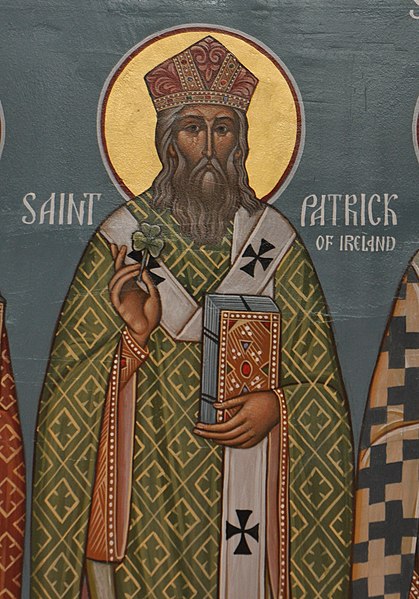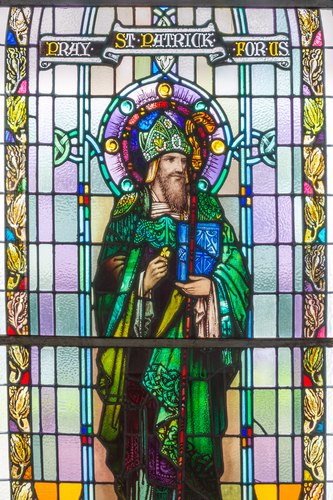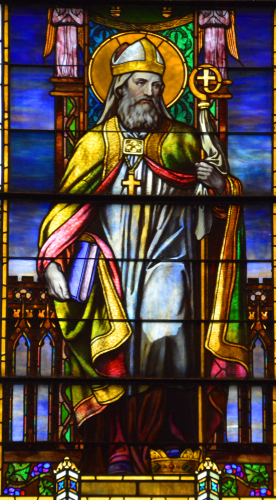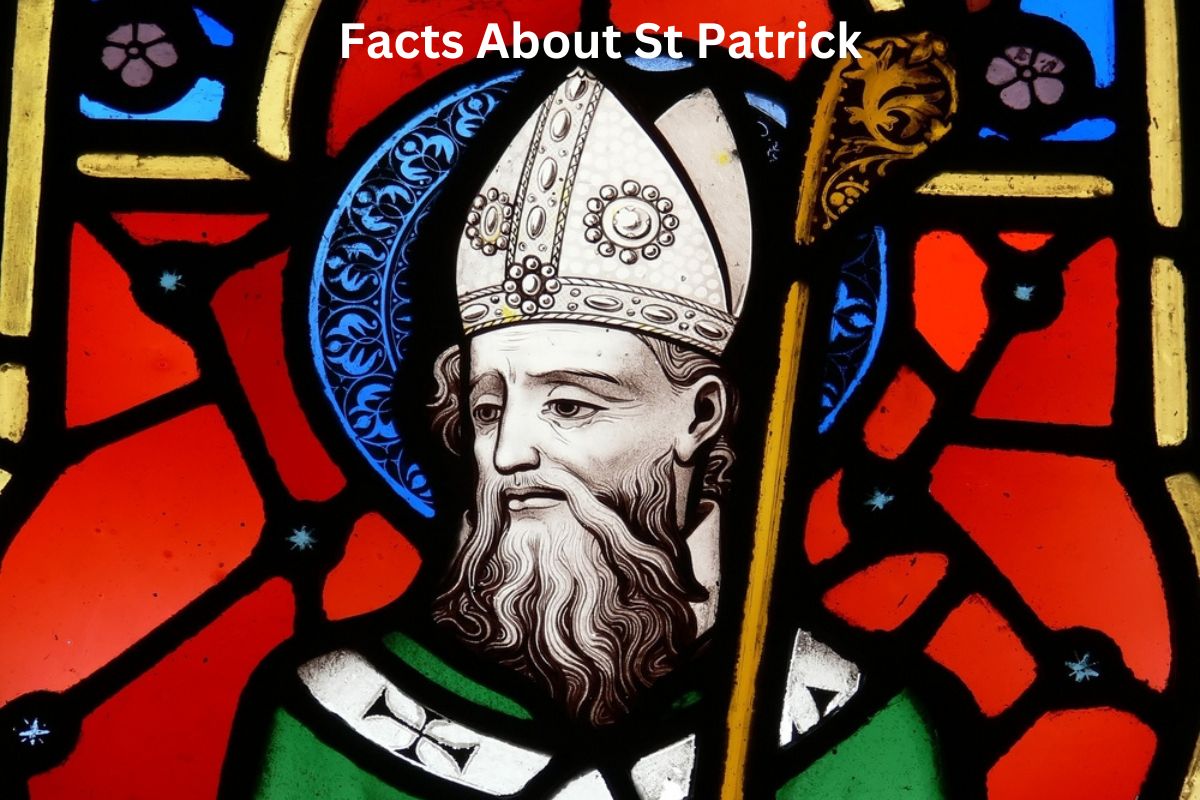St. Patrick, the patron saint of Ireland, is a legendary figure renowned for his role in spreading Christianity throughout the Emerald Isle.
Born in Roman Britain, he endured kidnapping by Irish pirates and subsequent enslavement in Ireland, where his Christian faith deepened. After a divine calling led him to escape captivity and return home, he pursued a religious vocation as a priest and later a bishop.
Saint Patrick is most famously associated with his mission to Ireland, where he converted pagans to Christianity and used the shamrock to explain the Holy Trinity.
His legacy endures, celebrated globally on St. Patrick’s Day, a vibrant commemoration of Irish culture and his contributions.
Saint Patrick Facts
1. Not originally Irish, born in Roman Britain
St. Patrick, originally named Maewyn Succat, was born in what is now believed to be modern-day Scotland or Wales, around the late 4th century, likely in the 390s AD.
At that time, Britain was part of the Roman Empire, and St. Patrick was born into a Romanized family.

2. Kidnapped by Irish pirates and enslaved in Ireland
At the age of 16, St. Patrick’s life took a dramatic turn when he was kidnapped by Irish pirates. These pirates raided coastal regions of Britain and took young people as slaves.
Also Read: Facts About St Michael
Patrick was taken to Ireland, where he endured six years of captivity, working as a shepherd in harsh conditions. It was during this time that he turned to Christianity for solace and guidance.
3. Found solace in Christianity during captivity
While in captivity in Ireland, St. Patrick turned to his Christian faith for comfort and strength. He began to pray fervently and found solace in his religious beliefs.
According to his writings, it was during this period of isolation and hardship that he deepened his religious convictions and developed a close relationship with God.
Also Read: St Anne Facts
He later wrote that he had a dream in which he received a message from God, instructing him to escape captivity and return to his homeland.
4. Escaped captivity and returned to his family
After St. Patrick’s divine vision and instruction to escape captivity, he managed to make his way back to his family in Britain.
This escape was a perilous journey, and it took him some time to return home safely. Once reunited with his family, he decided to pursue a religious vocation.

5. Received a divine calling to become a priest and bishop
St. Patrick’s spiritual experiences continued after his return to Britain. He claimed to have had another profound dream in which he saw the people of Ireland calling him back to the land where he had been a captive.
Interpreting this dream as a divine calling, he decided to become a priest and later a bishop, with the intention of returning to Ireland as a missionary to convert the pagan population to Christianity.
6. Missionary to Ireland, converting pagans to Christianity
St. Patrick is most famously known for his mission to Ireland, where he played a pivotal role in the Christianization of the country. He returned to Ireland as a Christian missionary, despite the risks involved, and embarked on a journey of evangelization.
St. Patrick’s mission was not without challenges and opposition, but he is credited with converting many Irish people to Christianity. His work laid the foundation for the Christian faith to take root and flourish in Ireland, and he is remembered as a key figure in Irish history and Christianity.
His legacy as a missionary and the patron saint of Ireland continues to be celebrated today, especially on St. Patrick’s Day, which has become a global celebration of Irish culture.

7. Associated with the use of the shamrock to explain the Holy Trinity
St. Patrick is often associated with the use of the shamrock, a three-leafed plant, to explain the concept of the Holy Trinity to the Irish people.
According to legend, he used the shamrock’s three leaves to illustrate the idea that God exists in three persons: Father, Son, and Holy Spirit, yet remains one God. This simple and memorable analogy helped the Irish, who were largely pagans at the time, grasp the Christian concept of the Trinity.
8. Date of death believed to be around March 17
While the exact date of St. Patrick’s death is a matter of historical debate, it is traditionally believed to have occurred around March 17th, which is why St. Patrick’s Day is celebrated on this date.
March 17th is often considered the date of his death and is a day of commemoration and celebration of his life and contributions.
9. St. Patrick’s Day celebrated on March 17th
St. Patrick’s Day, also known as the Feast of St. Patrick, is celebrated annually on March 17th in honor of St. Patrick. It has evolved into a global celebration of Irish culture and heritage.
People around the world, not just in Ireland, celebrate this day by wearing green clothing, participating in parades, enjoying traditional Irish food and drink, and often attending religious services to honor St. Patrick.
10. Legacy as the patron saint of Ireland and global celebration of Irish culture
St. Patrick is considered the patron saint of Ireland, and his legacy looms large in Irish culture and history. His efforts as a missionary and the role he played in bringing Christianity to Ireland are celebrated as a fundamental part of the country’s heritage.
St. Patrick’s Day, originally a religious holiday, has become a global celebration of Irish culture, with people of all backgrounds joining in the festivities. It’s a day to honor St. Patrick’s contributions and to celebrate the rich traditions and history of Ireland. St. Patrick’s legacy continues to be remembered and celebrated by people all over the world.
